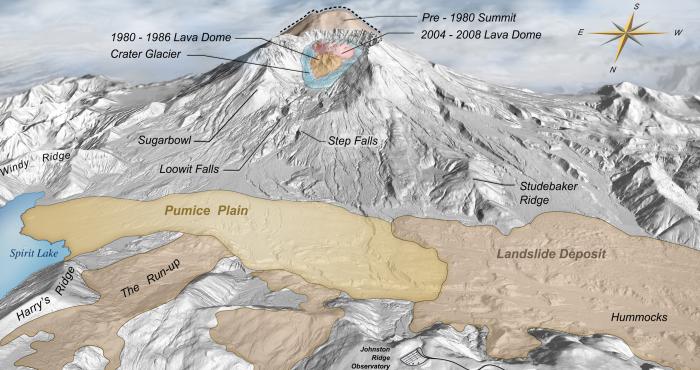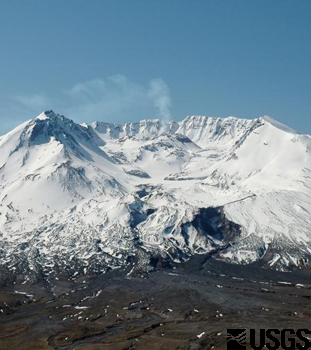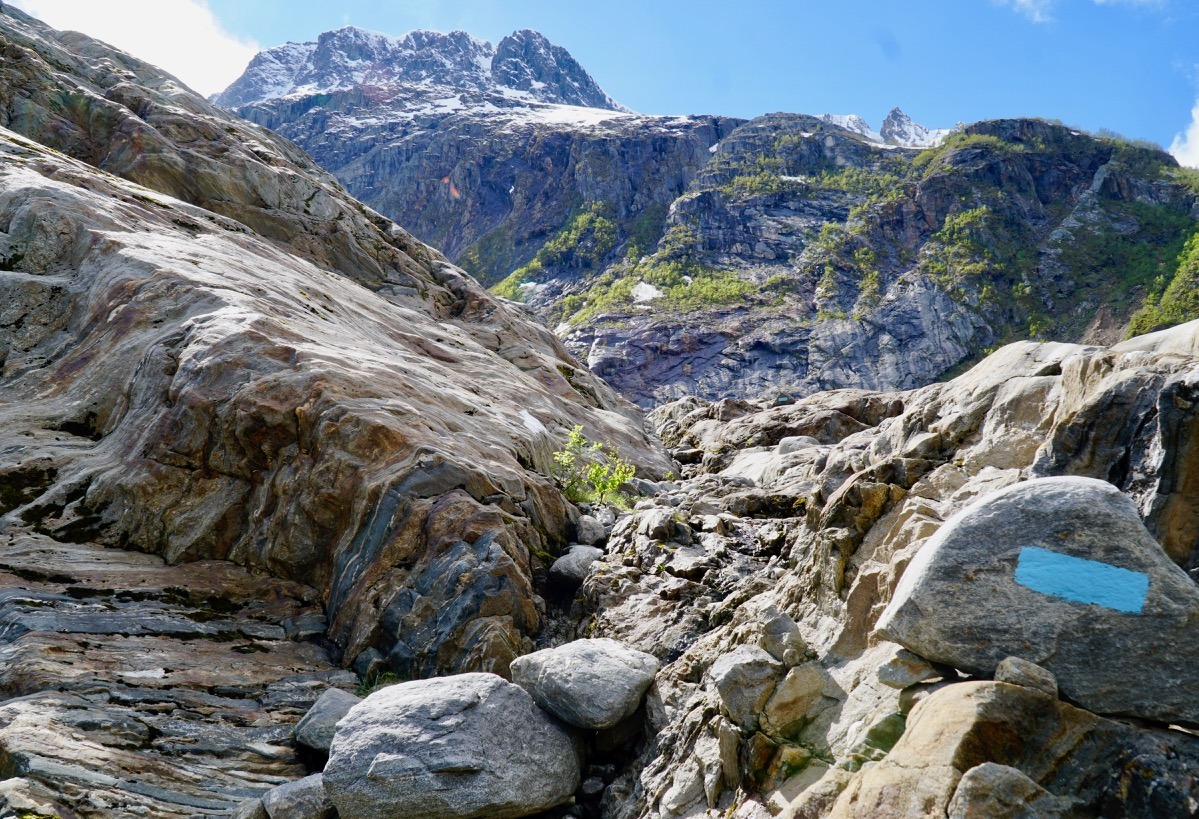 |
| Photo Credit: https://www.deloreantimemachine.com/ |
For my volcano field trip today, I chose to explore one of the most extreme volcanic events to occur in the continental United States, the site of Mt. St.Helens. To begin, I jumped in my handy time machine, and went back to 1980 to observe the volcano in it's pre-eruptive state. (And yes I'm aware that the film my time machine is based on called Back to the Future, actually now takes place in the past).
As I set the dials for my flux capacitor to 1980, I emerged from the time travel tunnels in Skamania County Washington.
 |
| Pre-eruption Photo Credit: Pinterest |
 |
| Digital Elevation Map of Mount St. Helens pre-1980 topography and deposits from 1980 - 2008[Credit USGS] |
 |
| Photo Credit USGS |
In the post eruptive state, nearly 1300 feet of the mountain's top portion was entirely removed, and ejected thousands of kms. The sheer force of the explosion also leveled trees, property, and pretty much anything in it's path.
In the wake of the destruction of this event, the next question on most people's minds would be, can this happen again? The answer to that questions is two-fold, will the volcano erupt again? Yes, I set the dial to my time machine to January 16, 2008 and observed another eruption. This one was not explosive, but a minor eruption. Scientists have ceased close activity to the dome, as pressure and dome formation continues into today. It is likely, we will see another eruption of Mt.St.Helens as it is located in subduction zone. It is unlikely that in our lifetimes we will see another explosive eruption on the scale of the 1980 event, as the formation and building of pressure took thousands of years. But it would be expected that an eruption on a smaller scale may well occur in the near future. Unfortunately I have been unable to secure enough fuel in my time machine to investigate into the future.
After my time-hopping was concluded, I returned my time machine to March 31st 2020, and resumed appropriate social distancing.






























